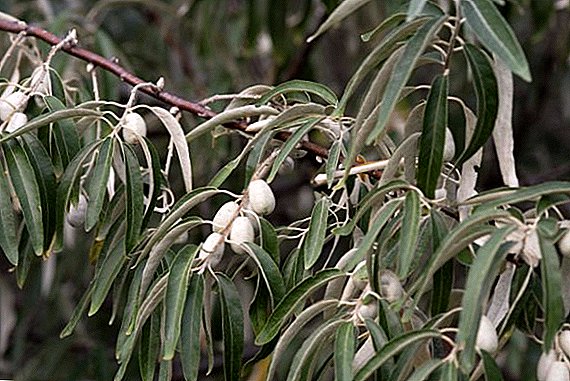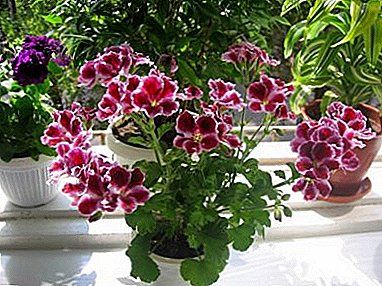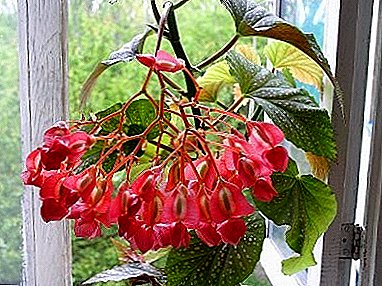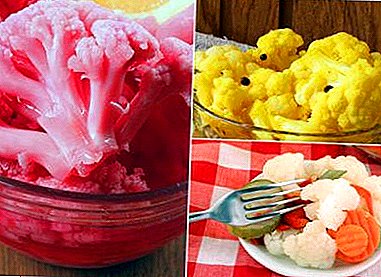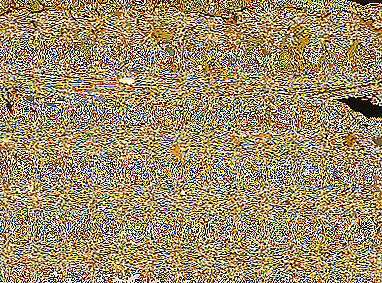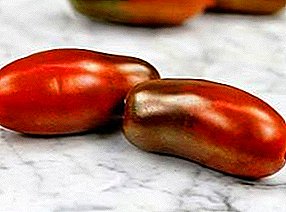
Long since the hen is the companion of man in life. The breed of chickens, Russian whites, is one of the most common egg breeds among the CIS countries.
Because of her fame, you can meet her in poultry farms and households, and their products in stores.
Breeders for 20 years led the work on the creation of this breed. As a result, received a white Russian breed, and the second of its name "Snow White".
Anyone who decided to engage in poultry farming should start with the breeding of this breed. This breed does not require special material costs.
History of breeding famous breed

The white Russian breed was bred by crossing males of the Leghorn breed of different origin (Danish, English, American) with our "purebred" females. The first work on the breed began in 1929. And during the long 24 years it was formed, it went through long stages of its formation.
Breeding work on this breed was carried out to obtain an increase in egg production. And in 1953, it was approved.
In the entire Soviet Union, the white Russian breed of chickens was used only in the direction of egg production, and so on until 1965. Productivity at that time amounted to 190 eggs per year weighing up to 60 grams.
In poultry farms that were engaged in breeding the breed, the breeders reached the figures and 200 eggs per yearand sometimes more. But time passed, and the breed began to yield in its productivity to foreign white leggorn. The difference between these breeds reached 50 eggs, and in the total weight of three kilograms per year.
Due to the fact that the breed ceased to be in demand, in 1990 its number decreased by about three million individuals. According to estimates, in 1975 their number was about 30 million birds.
In our time, this breed has retained its number in Turkmenistan, Azerbaijan and Turkmenistan. Although our breeders have not forgotten this breed and continue to work to increase its productivity, hoping to increase performance.
Breeders expect that in the near future, the white Russian breed will be able to compete with foreign breeds.
Description of white Russian breed of hens
Russian white breed of chickens can be described by such exterior characteristics as:

- The head is well developed and has medium size.
- Males of white Russian breed have a large comb in the form of leaves with five teeth. And the hen's comb is a little shifted to the side.
- The beak is solid, yellow.
- The ears are small white.
- The neck is thick, the average length.
- Birds have a wide convex chest.
- The torso of the birds is oblong, and the back is wide.
- The tummy of the breed is quite voluminous.
- The wings of birds are well developed and fit very well to the body.
- The legs are yellow, the plumage is missing.
- Tail length is average, well developed.
- All birds of this breed have the same color.
- Small chickens are covered with yellowish fluff, which is replaced by white plumage when growing up.
What features can be characterized breed?

As mentioned earlier, the white Russian breed of chickens refers to egg productivity, and at its farms it is bred solely for the sake of it. In addition, this breed was selected for resistance to microorganisms, neoplasms.
Because of this process, this breed is very interesting in the biological industry, which in turn produces safe medicines.
White Russian breed can be bred, as in large poultry farms, and in the household.
Also, novice poultry farmers can begin to engage in these activities with breeding white Russian breed, as it is unpretentious to the conditions of detention and does not require special attention.
Birds of this breed have good resistance to diseases, adult birds are characterized by their safety of about 91%, and young animals about 96%.
What positive qualities characterize the breed
- White Russian breed is not whimsical to the conditions of detention and to feeding
- An important indicator is neoplasm resistance.
- Birds of this breed are resistant to diseases, both adults and young.
- Chickens have good egg production.
What is the correct content of the breed?

There are several ways to keep a breed. Each of them has both positive and negative sides, which you need to be aware of when breeding this breed.
White Russian breed can be kept on rough underlay. This method of content is most suitable for owners of large areas.
The essence of this method is to keep the birds in the room with a rough litter on the floor. Most of the time the birds have to spend on the street, which allows the poultry farmer to save on feed, because the birds start eating grains, insects and pecking green grass.
But it is necessary to know that the number of birds should not be too large, as they trample all the weed and eat all insects. Also, with a large number of birds there is a risk of any infectious disease.
The thing is that it is impossible to keep track of all the birds on a large area, so the farmer needs much time to spend on his wards. In addition, any of your chicken can be curious about what is on the forbidden territory for them and easily become the prey of any hunter.
In order for your birds to be safe for them territory must be protected, to protect them from predators.
In experienced poultry farmers such a place is called a solarium. The area allotted to the birds must be firm, so that later there will be less hassle when cleaning it.
The poultry farmer does not need to make an earthen floor on the walking area, since during the rainy season it will turn into dirt and into a spreader of bacteria, which you do not need at all.

A poultry breeder who cannot provide his birds with a large area needs to be equipped cell batteries. Such content of white Russian chickens will save you space.
In addition, the farmer can do a detour every day and watch his wards. The floor in the chicken coop room will be clean almost all the time, because birds will spend most of their time in cages. But this option of keeping chickens has many drawbacks.
Of course, there is a plus in the cellular content that is less eating of feed, since they will spend less energy. However, a farmer with a cellular birds should constantly monitor the parameters of the microclimate in the chicken coop.
Too high or low temperatures and humidity can cause health problems in birds. Indicators of relative humidity of air should not be more than 70%. Air temperature in cold time should not be less than -2 degrees Celsius, and in the warm period not more than +27 degrees Celsius.
With a sharp decrease in temperature in birds can freeze scallops and earrings. Also in birds egg production decreasesbut the feed intake remains the same or even increases.
High temperatures also have a bad effect on birds, their appetite decreases, which in the future will have a bad effect on egg production. Lack of water also adversely affects birds and decreases productivity.
All the nuances of feeding young birds

White Russian chickens at an early stage of development are also fed as broilers. Young birds should be fed two or three times a day. With the growth of young stock increases, and their need for feed, therefore, as they grow, reduce protein content in the diet the birds.
Up to eight weeks of age, chickens should not be limited to food, but after two months it is necessary to limit birds to 20%, it is only necessary to take a closer look at the birds if everyone has access to the feeder.
Little chickens need to be fed not large feed pellets, but baby. On its absorption they need a longer period of time. And it also reduces the likelihood of slander among chickens.
With the onset of 21 weeks of life for young birds, they should start feeding as an adult bird. Nutrition of young and adult birds is different in that others have more calcium salt. This salt helps to carry eggs with thicker shells and reduces the likelihood of egg deformation.
It is also important to prepare young birds for carrying eggs. To do this, the feed must increase the protein content. With his assistance, the reproductive system of the white Russian breed of chickens develops faster, and also the rate of egg follicle formation increases.
It is also interesting to read about feeding broiler chickens.
Secrets of feeding adult birds of white Russian breed of chickens

An adult white Russian chicken needs to be fed twice a day with full feed. But you need to know that the feeder can not be filled with ridingbecause chickens will scatter everything.
To eat birds it will be enough to fill them with 2/3 of the feeder. If you decide to feed the birds with wet food, then its amount should be reduced. Wet food chickens should eat for half an hour, as it quickly deteriorates and it reduces the amount of nutrients.
After the chickens have eaten their feeders, it is necessary to wash them so that the pathogens do not divorce. Novice poultry farmers need to know the fact that from the beginning of the egg production of the bird to the age of 48 weeks, their egg production is constantly growing.
That says that they should be fed more than usual. After that, laying eggs decreases. This process reaches its minimum at the age of 48 weeks. Also at this time, the white Russian breed stops growing, which means that the amount of feed can be reduced.
An average of 120 grams of feed per animal is consumed per day. In a year it is about 44 kilograms.
If green feed is included in the daily ration of chickens, then the total feed should be increased to 170 grams per day. Because of this, the waste of dry feed is reduced, and, moreover, the productivity and viability of chickens is increased due to the content of healthy trace elements in green feed.
When pumping birds pumpkin you can prevent many diseases.
What are the performance indicators of white Russian breed of chickens?

The average egg production per hen per year is up to 200 in the first twelve months of productivity. The average weight of an egg is about 56 grams. But there are chickens record holders who give and 244 eggs per year.
It happens that they carry about 300 eggs per year, but this is a great rarity. Chickens of white Russian breed begin to rush in five months, so you can expect to receive a quick income.
Since this breed was bred only for eggs, then meat productivity of birds of this breed has suffered greatly. The weight of one hen is about 1.8 kilograms, and a rooster varies from 2 to 2.5 kilograms.
Russian white breed of chickens has a very good egg production. This breed is still as popular in some regions of the country as before.
This breed is suitable only for beginner farmers, it is not picky in its content and feeding. Especially adult birds have good resistance to diseases. The breed can also be kept at the summer cottage, which is very good for amateur farmers.


